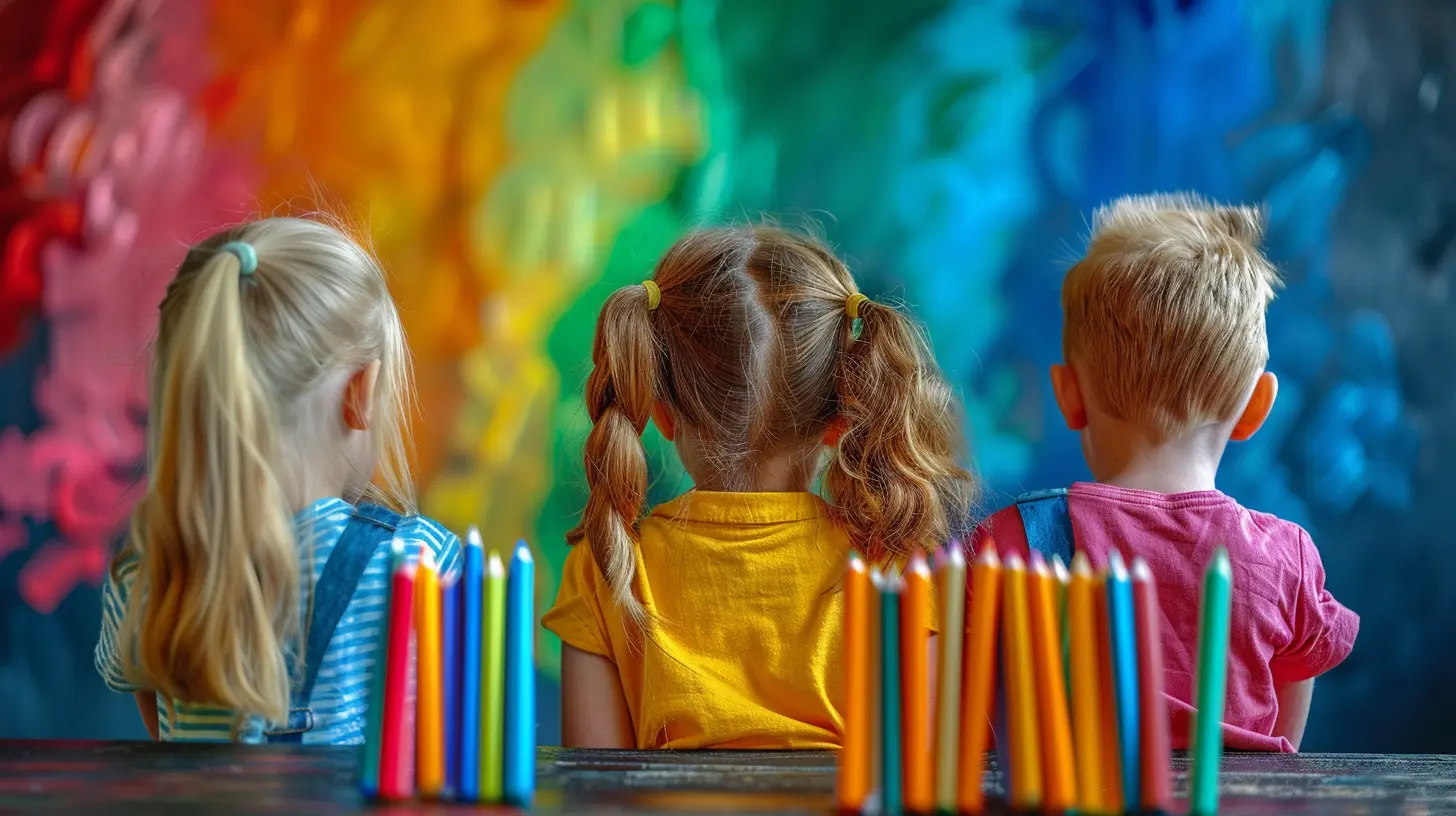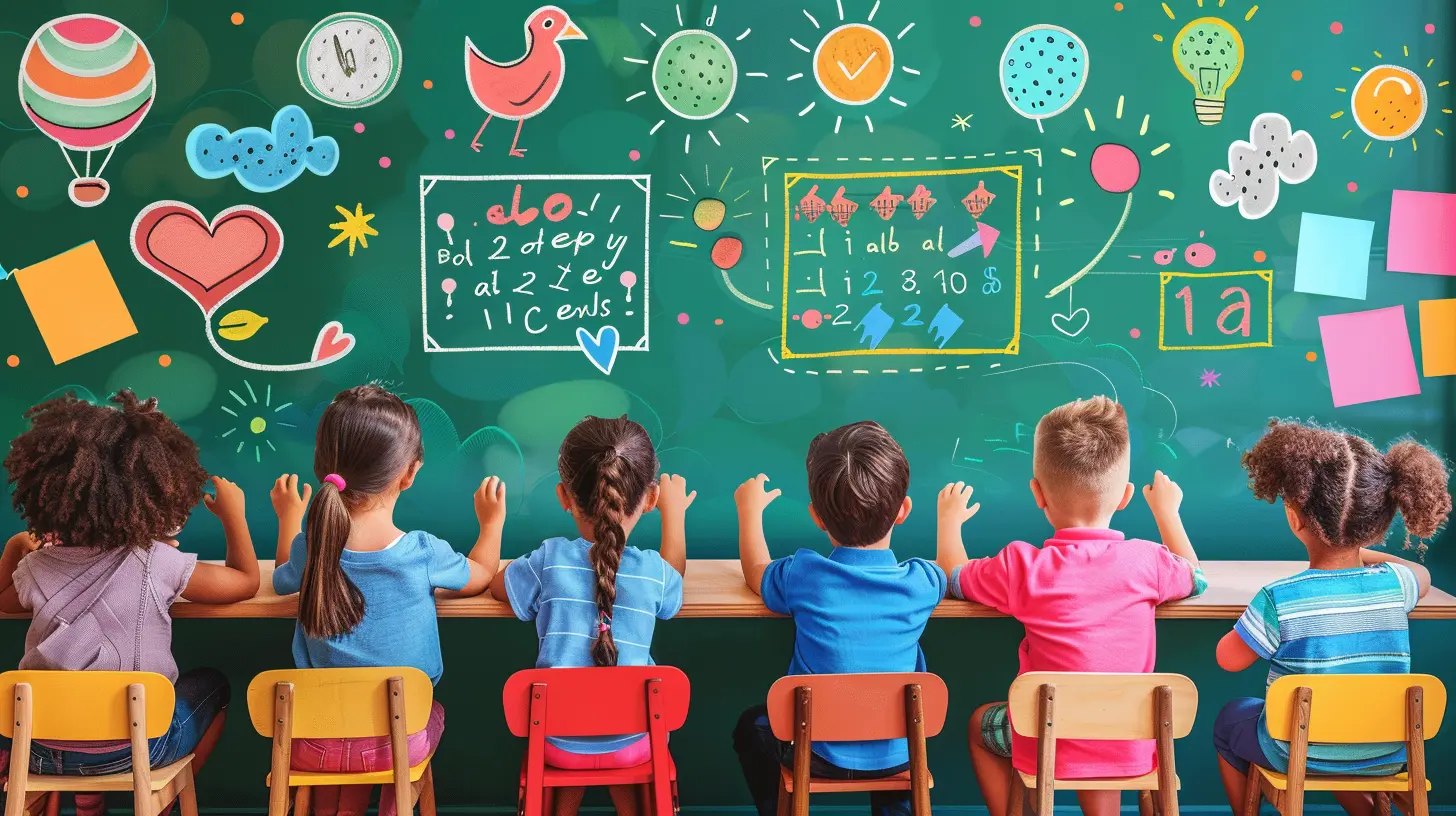How to Integrate SEL into Your Daily Lessons
1 April 2025
Social-emotional learning (SEL) isn't just a buzzword—it's a game-changer in education. When students develop emotional intelligence, they become better learners, more empathetic classmates, and more resilient individuals. But here’s the challenge: How do you seamlessly integrate SEL into your daily lessons without it feeling like just another thing to check off your to-do list?
The good news? It’s easier than you think! By weaving SEL into everyday activities, you can foster a positive classroom environment and help students build essential life skills. Let’s dive into some practical and engaging ways to make SEL part of your daily lessons. 
What Is Social-Emotional Learning (SEL)?
Before we jump into strategies, let’s get a quick understanding of what SEL really means.According to CASEL (Collaborative for Academic, Social, and Emotional Learning), SEL focuses on five core competencies:
1. Self-Awareness – Understanding one’s emotions and recognizing strengths and limitations.
2. Self-Management – Regulating emotions, setting goals, and demonstrating self-discipline.
3. Social Awareness – Understanding others' emotions and showing empathy.
4. Relationship Skills – Building positive relationships and communicating effectively.
5. Responsible Decision-Making – Making ethical and constructive choices.
Incorporating these competencies into your daily lessons doesn’t have to be complicated—it just requires intention. 
Why Is SEL Important in the Classroom?
You might be wondering, “Do I really need to add another element to my teaching?” The short answer? Absolutely!Here’s why:
- Boosts Academic Performance – Students with strong SEL skills perform better in school. Research shows that SEL-friendly classrooms see higher test scores and improved focus.
- Improves Classroom Behavior – When students manage their emotions, there are fewer disruptions and conflicts.
- Builds a Supportive Learning Environment – A classroom that prioritizes SEL fosters trust, respect, and inclusivity.
- Prepares Students for Life – Let’s be real—academics are important, but emotional intelligence and interpersonal skills are critical for long-term success.
Now that we understand why SEL matters, let’s discuss how to make it a natural part of daily lessons. 
1. Start Each Day with a Check-In
Think of a classroom check-in as a warm-up for emotions. Just like we stretch before exercising, students need time to recognize their feelings before diving into learning.Try this:
- Ask simple questions like, “How are you feeling today?” or “What’s one thing on your mind right now?”
- Use a feelings chart where students can point to or write down their moods.
- Encourage journaling for older students to reflect on their emotions.
A few minutes of reflection can set a positive tone for the rest of the day. 
2. Incorporate SEL into Group Work
Collaboration is a great way to build social skills and emotional intelligence. When students work together, they learn to communicate, solve conflicts, and practice empathy.Some ideas:
- Assign Roles – Give each student a specific role (e.g., discussion leader, timekeeper, encourager) to build accountability and teamwork.
- Practice Active Listening – Teach students to listen without interrupting and summarize what their peers say before responding.
- Encourage Peer Feedback – Let students give constructive feedback to each other in a supportive way.
Group work isn’t just about academics—it’s about learning to navigate relationships, too!
3. Use Literature to Teach Empathy
Books are a fantastic way to help students understand emotions and different perspectives. Whether you're teaching first-graders or high schoolers, storytelling can spark empathy and meaningful discussions.How to do it:
- Discuss Character Emotions – Ask students how characters feel and why they react a certain way.
- Make Connections – Encourage students to relate a character’s experience to their own lives.
- Role-Playing – Have students act out scenes to better understand different viewpoints.
Stories have a magical way of helping students put themselves in someone else’s shoes.
4. Integrate SEL into Classroom Discussions
Want to make SEL part of your normal conversations? It’s all about the questions you ask and the way you guide discussions.Try incorporating these prompts into your lessons:
- “How did that decision impact others in the story?”
- “What would you do if you were in that situation?”
- “How did that event make the character feel?”
Encouraging deeper thinking fosters emotional intelligence and decision-making skills.
5. Model SEL Skills Yourself
Let’s be honest—kids learn more from what we do than what we say. If you want your students to develop social-emotional skills, the best place to start is with yourself!Some ways to model SEL:
- Share your own emotions and how you manage them.
- Apologize when you make mistakes to show humility and accountability.
- Demonstrate active listening and respect when students share their thoughts.
When students see their teacher practicing SEL, they’re more likely to follow suit.
6. Encourage Mindfulness and Reflection
Mindfulness isn’t just for yoga studios—it’s a powerful classroom tool, too! Teaching students to slow down and reflect can help them manage stress, stay focused, and build self-awareness.Try integrating mindfulness activities like:
- Breathing Exercises – Teach students to take deep breaths to calm their nerves.
- Gratitude Journals – Have them list three things they’re grateful for each day.
- Guided Meditation – Play short mindfulness exercises to reset their minds.
A few moments of mindfulness can make a huge difference in a student’s emotional well-being.
7. Celebrate Mistakes as Learning Opportunities
Many students fear failure, but mistakes are a powerful part of learning. Teaching students to embrace setbacks builds resilience and confidence.Ways to shift the mindset:
- Normalize Mistakes – Remind students that failure is part of growth.
- Encourage a Growth Mindset – Use phrases like "You haven’t mastered it yet," instead of "You can't do it."
- Reflect on Challenges – Discuss what students learned from their mistakes.
When mistakes are seen as stepping stones instead of setbacks, students develop perseverance and problem-solving skills.
8. End Each Day with a Reflection
Just as a morning check-in sets the tone, closing the day with reflection helps students process their experiences.Some ideas for wrap-ups:
- Rose, Thorn, Bud – Have students share a highlight (rose), a challenge (thorn), and something they look forward to (bud).
- One Word Summary – Ask students to describe their day in one word.
- Gratitude Circle – Let students express appreciation for a classmate or moment in the day.
Ending with reflection fosters gratitude and emotional awareness—a perfect way to close the day.
Final Thoughts
Incorporating SEL into your daily lessons doesn’t require a radical change—it just takes small, intentional steps. By prioritizing emotional intelligence alongside academics, you're not only creating a positive classroom environment but also equipping students with valuable life skills.Remember, teaching isn’t just about imparting knowledge—it’s about shaping hearts and minds. And when SEL is at the core of your teaching, your students will thrive both inside and outside the classroom.
all images in this post were generated using AI tools
Category:
Teacher ResourcesAuthor:

Olivia Chapman
Discussion
rate this article
7 comments
Annette McLanahan
Integrating SEL? Just sprinkle a little empathy dust on your lessons—voilà, instant classroom magic!
May 1, 2025 at 1:02 PM

Olivia Chapman
While it may seem simple, integrating SEL requires intentional planning and genuine engagement. It's about weaving empathy and connection into every facet of the learning experience, not just a sprinkle!
Selena McKibben
This article is a fantastic resource! Integrating social-emotional learning into daily lessons can truly transform the classroom environment. It’s all about fostering connections and supporting students' well-being. I can’t wait to try out some of these practical strategies in my own lessons! Thank you for sharing!
April 22, 2025 at 6:26 PM

Olivia Chapman
Thank you for your thoughtful feedback! I'm glad you found the article helpful and inspiring. Best of luck with implementing the strategies in your lessons!
Calyx Chavez
Integrating Social and Emotional Learning (SEL) into daily lessons fosters a holistic educational environment. By prioritizing emotional awareness and interpersonal skills, educators not only enhance academic achievement but also nurture resilient, compassionate individuals, preparing students for challenges beyond the classroom. Every moment counts!
April 10, 2025 at 3:46 AM

Olivia Chapman
Absolutely! Integrating SEL promotes both academic and personal growth, equipping students with essential skills for life. Every moment truly matters in building a supportive learning environment!
Penelope Summers
Integrating Social Emotional Learning (SEL) into daily lessons isn't just adding a sprinkle of empathy; it's about baking it into the entire educational cake. When students connect emotionally, they learn more deeply. Let's transform classrooms into nurturing spaces where academic and emotional growth go hand in hand!
April 8, 2025 at 8:38 PM

Olivia Chapman
Absolutely! Integrating SEL into daily lessons enriches the learning environment, fostering both academic success and emotional development. Let's make our classrooms nurturing spaces for holistic growth!
Myles Jennings
Sprinkle some SEL magic into lessons—it's like adding sprinkles on top of learning cupcakes!
April 6, 2025 at 4:47 AM

Olivia Chapman
Absolutely! Just like sprinkles enhance cupcakes, integrating SEL adds flavor and richness to learning, making it more engaging and impactful for students.
Ember Fields
Integrating Social-Emotional Learning (SEL) into daily lessons is essential for fostering well-rounded students. By weaving SEL competencies into academic content, we create a supportive environment that enhances engagement and promotes resilience. It’s not just an add-on; it’s a fundamental shift in how we approach education. Let's lead the change!
April 4, 2025 at 4:02 AM

Olivia Chapman
Thank you for your insightful comment! I completely agree—integrating SEL into daily lessons is vital for creating a supportive learning environment that nurtures both academic and personal growth. Let's continue leading this important change together!
June McGarvey
Integrating SEL enhances student engagement and emotional well-being, fostering a holistic learning environment.
April 3, 2025 at 4:24 AM

Olivia Chapman
Thank you! I completely agree—integrating SEL not only boosts engagement but also creates a supportive space for all students to thrive.
MORE POSTS

How to Manage Your Time During a Timed Exam

The Role of Emotional Intelligence in Online Learning Success

Moral Dilemmas: Teaching Critical Thinking in Ethical Decisions

The Role of Religion in Shaping Empires

The Role of Listening in Conflict Resolution

The Connection Between Art and Literacy in Early Learning